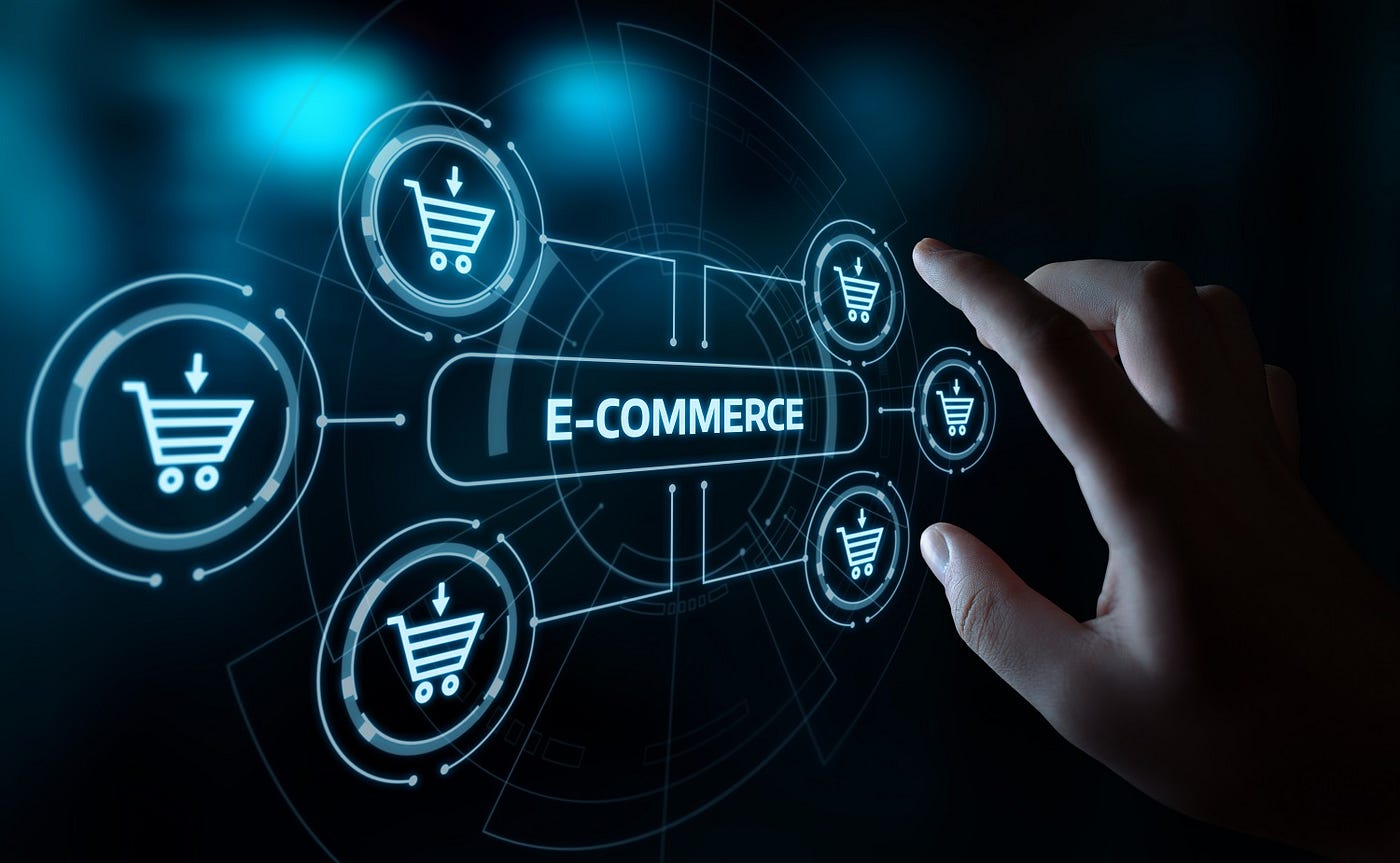
In the ever-evolving realm of digital commerce, the advent of e-commerce has revolutionized the way we shop, connect, and conduct business. From humble beginnings in the mid-1990s to becoming a global force shaping consumer behaviors, e-commerce has traversed a remarkable journey. Join us as we delve into the historical milestones, numerical intricacies, and transformative trends that define the landscape of online shopping. From the founding of giants like Amazon to the innovative integration of technologies like blockchain and augmented reality, the story of e-commerce is one of continuous adaptation, innovation, and the seamless fusion of technology and commerce. Let’s embark on a journey through the fascinating facts and figures that encapsulate the dynamic world of e-commerce.
Inception of Online Shopping:
The inception of online shopping marked a transformative moment in retail history. On August 11, 1994, Phil Brandenberger made the pioneering move of making the first-ever online purchase—a Sting CD. Little did he know that this seemingly ordinary transaction would set the stage for a digital commerce revolution, reshaping how people buy and sell goods.
Amazon’s Founding:
On July 5, 1994, Jeff Bezos laid the foundation for what would become the world’s largest online retailer—Amazon. Starting as an online bookstore, Amazon rapidly expanded its offerings, revolutionizing the retail landscape. Bezos’ vision and Amazon’s relentless focus on customer satisfaction played a pivotal role in establishing e-commerce as a dominant force.
First E-Commerce Transaction:
The year 1995 witnessed a milestone in online commerce with the first secure transaction by NetMarket. The sale of Sting’s “Ten Summoner’s Tales” album marked a significant leap forward in e-commerce, showcasing the potential for secure and encrypted online transactions.
eBay’s Launch:
Pierre Omidyar’s creation, eBay, launched on September 3, 1995, forever changing the dynamics of buying and selling. The platform introduced the concept of online auctions, providing users with a virtual marketplace where they could bid on a wide array of items.
Introduction of PayPal:
December 1998 saw the birth of PayPal, founded by Max Levchin, Peter Thiel, and Luke Nosek. This online payment platform became a game-changer, simplifying transactions and contributing to the growth of e-commerce by providing a secure and efficient means of online payment.
Mobile Commerce (m-Commerce):
The mid-2000s marked the rise of mobile commerce as smartphones became ubiquitous. This shift allowed users to make purchases anytime, anywhere, paving the way for a new era in digital commerce characterized by convenience and accessibility.
Cyber Monday Records:
Cyber Monday, the digital counterpart to Black Friday, hit record-breaking sales in 2021, exceeding $10.7 billion in the United States alone. This annual online shopping event has become a crucial part of the holiday season, demonstrating the increasing significance of e-commerce in retail.
Alibaba’s Single’s Day:
Alibaba’s Singles’ Day, celebrated on November 11, emerged as the world’s largest online shopping day. In 2021, Alibaba reported a staggering $84 billion in sales on this single day, underscoring the colossal scale and influence of this Chinese e-commerce giant.
Global E-Commerce Sales:
Projections for 2022 estimate global e-commerce sales to surpass a staggering $4.2 trillion, reflecting the continued growth and influence of digital commerce on a global scale.
E-Commerce Penetration:
As of 2021, e-commerce penetration reached around 20% of total retail sales globally. This statistic highlights the substantial impact of online shopping on traditional brick-and-mortar retail, showcasing a shift in consumer behavior towards digital transactions.
Amazon’s Market Share:
Amazon’s dominance in the U.S. e-commerce market reached approximately 40% in 2021. This staggering market share cements Amazon’s status as a key player in the digital retail landscape, shaping consumer habits and expectations. The company’s relentless focus on innovation, customer service, and an extensive product range has solidified its position as a household name in online shopping.
E-Commerce and COVID-19:
The COVID-19 pandemic had a profound impact on e-commerce, accelerating the shift towards online shopping. In 2020, global e-commerce sales surged by 27.6%, as lockdowns and safety concerns prompted consumers to turn to digital platforms for their shopping needs. This unprecedented growth during the pandemic underscored the resilience and adaptability of e-commerce in the face of global challenges.
Blockchain in E-Commerce:
The integration of blockchain technology in e-commerce introduces enhanced security and transparency to transactions. Blockchain’s decentralized and tamper-resistant nature provides a solution to issues such as fraud and counterfeit products, fostering trust among consumers and sellers in the digital marketplace.
Augmented Reality (AR) in E-Commerce:
Augmented reality is increasingly shaping the e-commerce landscape by allowing customers to virtually interact with products before making a purchase. This immersive technology provides a unique and engaging shopping experience, particularly in industries like fashion and furniture, where visualizing products is crucial.
Voice Commerce (V-Commerce):
Voice commerce, facilitated by virtual assistants like Amazon’s Alexa and Google Assistant, introduces a hands-free and convenient shopping experience. Users can browse products, add items to their cart, and complete transactions using voice commands, revolutionizing the way consumers interact with e-commerce platforms.
Cross-Border E-Commerce:
Cross-border e-commerce, involving the buying and selling of goods across international borders, has become a significant component of global online trade. This trend is fueled by consumers seeking access to a broader range of products and international merchants tapping into new markets.
E-Commerce and Sustainability:
E-commerce platforms are increasingly prioritizing sustainability initiatives. From eco-friendly packaging to carbon offset programs, the industry is acknowledging its environmental impact and working towards more responsible and sustainable practices.
Subscription E-Commerce:
The rise of subscription-based e-commerce models introduces a recurring revenue stream for businesses while providing customers with a convenient and personalized shopping experience. Subscription services span various industries, from streaming platforms to curated product boxes, fostering customer loyalty.
Live Commerce:
Live commerce, combining live streaming with e-commerce, has gained popularity as a dynamic way for brands and influencers to showcase products in real-time. This interactive format allows viewers to ask questions, receive demonstrations, and make purchases seamlessly, fostering a sense of community around the shopping experience.
Digital Wallet Usage:
The widespread adoption of digital wallets, such as Apple Pay and Google Pay, has streamlined online payments. Offering a secure and efficient alternative to traditional payment methods, digital wallets contribute to the seamless and frictionless nature of e-commerce transactions.
E-Commerce Fraud:
E-commerce is not immune to the challenges of fraud, with global losses reaching $20.9 billion in 2021. The complex and ever-evolving nature of online fraud poses a constant threat to the security of digital transactions. To combat this, e-commerce platforms and financial institutions continually invest in advanced security measures, artificial intelligence, and machine learning algorithms to detect and prevent fraudulent activities, ensuring the protection of both businesses and consumers.
E-Commerce in Asia:
Asia stands as a powerhouse in the world of e-commerce, with China leading the way. In 2021, China’s e-commerce sales soared to over $2.7 trillion, emphasizing the colossal scale of digital trade in the region. The e-commerce landscape in Asia reflects the diverse market dynamics and consumer behaviors that contribute to the region’s prominence in the global online marketplace.
Social Commerce:
Social commerce, the integration of e-commerce with social media platforms, has emerged as a transformative trend in online shopping. Platforms like Instagram and Facebook now offer users the ability to discover, explore, and purchase products seamlessly within the social media environment. This convergence of social interactions and shopping experiences is reshaping the way consumers engage with brands and make purchase decisions.
Big Data in E-Commerce:
Big data analytics plays a pivotal role in the e-commerce ecosystem. By analyzing vast amounts of consumer data, businesses can gain insights into purchasing behavior, preferences, and trends. This data-driven approach empowers e-commerce platforms to personalize user experiences, optimize supply chain management, and enhance overall operational efficiency, ultimately delivering a more tailored and efficient shopping experience.
E-Commerce and Employment:
The growth of e-commerce has had a profound impact on employment, creating new job opportunities across various sectors. From digital marketing and data analysis to logistics and customer service, the e-commerce industry has become a significant contributor to job creation. The evolving nature of e-commerce continually shapes the job market, reflecting the dynamic and transformative influence of digital commerce on the broader economy.
E-commerce FAQs: Your Guide to Online Shopping Success
E-commerce, or electronic commerce, refers to the buying and selling of goods and services online. It has revolutionized the way we shop, offering convenience, variety, and competitive prices. Here are some frequently asked questions to help you navigate the exciting world of e-commerce:
1. What are the benefits of shopping online?
- Convenience: Shop from the comfort of your couch, 24/7. No need to battle traffic or crowded stores.
- Selection: Access a wider variety of products from around the world, often exceeding what’s available in local stores.
- Competitive Prices: Compare prices from different retailers with ease, potentially finding better deals.
- Product Information: Read detailed descriptions, reviews, and comparisons before you buy.
- Promotions and Discounts: Many online stores offer exclusive deals, coupons, and flash sales.
- Faster Checkout: No waiting in lines. Simply add items to your cart and pay securely online.
- Delivery Options: Choose from convenient delivery options, including home delivery, pick-up points, or lockers.
2. What are some popular e-commerce platforms?
- Retailer Websites: Many major retailers have their own online stores where you can buy directly from them.
- Marketplaces: Giant online marketplaces like Amazon, eBay, and Etsy offer a vast selection of products from various sellers.
- Social Commerce: Platforms like Instagram and Facebook are increasingly integrating shopping features, allowing you to purchase products directly within the app.
3. How do I ensure a safe and secure online shopping experience?
- Shop from reputable websites: Look for the https:// secure connection symbol and a lock icon in the address bar.
- Beware of phishing scams: Don’t click on suspicious links or emails claiming to be from online retailers.
- Use strong passwords: Create unique and complex passwords for your shopping accounts and enable two-factor authentication where available.
- Review payment methods: Use secure payment gateways like PayPal or credit cards with verified 3D Secure.
- Read seller reviews: Check seller ratings and reviews on marketplaces before making a purchase.
- Understand return policies: Be aware of the return window, conditions, and any associated fees.
4. What are the different types of shipping options?
- Standard Shipping: The most economical option, but delivery can take several days.
- Expedited Shipping: Faster delivery times at a higher cost.
- Next-Day Delivery: Guaranteed delivery by the next business day, typically the most expensive option.
- Free Shipping: Many retailers offer free shipping above a certain order value.
- Pick-up Points: Choose to collect your order at a designated location for added convenience.
- Lockers: Secure lockers at convenient locations allow you to pick up your order at your own time.
5. How do I track my order?
Most online retailers provide order tracking information. You’ll receive an email with a tracking number, allowing you to follow your package’s progress on the courier’s website.
6. What should I do if I receive a damaged or incorrect item?
- Contact customer service: Immediately notify the seller about the issue. Most reputable online stores have clear procedures for handling damaged or incorrect items.
- Provide documentation: Take photos of the damaged item or packaging, and keep copies of any emails or communication with customer service.
7. What are some popular payment methods for online shopping?
- Credit Cards: Widely accepted and offer purchase protection in many cases.
- Debit Cards: Ensure you have sufficient funds to cover the purchase.
- PayPal: A secure online payment platform that allows you to link your bank account or credit card.
- Digital Wallets: Platforms like Apple Pay and Google Pay offer a convenient way to pay using your smartphone.
8. What are some e-commerce trends to watch out for?
- Mobile Shopping: The rise of mobile shopping with optimized apps and mobile-friendly websites.
- Social Commerce: Increased integration of shopping features within social media platforms.
- Personalized Shopping Experiences: Recommendations and targeted advertising based on individual preferences and browsing history.
- Voice Commerce: Using voice assistants like Alexa or Google Assistant to make purchases hands-free.
- Augmented Reality (AR): Virtual try-on features and interactive product experiences using AR technology.
By understanding these e-commerce FAQs, you can navigate the online shopping world with confidence, making informed decisions and enjoying the many benefits it offers. Happy shopping!









